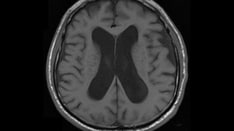This transcript has been edited for clarity.
Hello. This is Paul Auwaerter with Medscape Infectious Diseases, speaking from Johns Hopkins University School of Medicine.
Although COVID has decreased in many parts of our country, and certainly I'm fielding fewer calls about it, patients are still getting infected. I remain worried about my patients who are particularly at high risk, including older patients and those who may have organ transplants, among others.
There continues to be a lot of discussion about rebound. I thought I might focus on rebound because there's been hesitancy around prescribing medications and regarding symptom management. Already there are challenges for many of our patients, especially with the protease inhibitor Paxlovid because of some drug interactions. For those who can't take Paxlovid, remdesivir can be logistically challenging, as it means getting patients into an appropriate venue that's open to get 3 days of parenteral drug therapy.
Rebound After Paxlovid and Molnupiravir
So, what do we know about rebound generally? Of course, Paxlovid has gotten most of the press [on this].
In its initial EPIC-HR study (Evaluation of Protease Inhibition for Covid-19 in High-Risk Patients), about 7% of patients who took Paxlovid had a rebound compared with about 4% of those who received placebo.
There's been a preprint out for some time now that provided estimates [of rebound] from over 13,000 patients who had their EHR records surveyed. Seven- and 30-day COVID rebound rates after Paxlovid were about 3.5% and 5.5%, respectively, whereas it was slightly lower for symptoms at 2.3% and 5.8%, respectively. For hospitalization, the rate was only about 0.5%, plus or minus there, but that's not always clearly known to be related to Paxlovid.
Although molnupiravir seemed to have higher rates of rebound symptoms or infection, it was often prescribed in older patients or in those with more comorbidities, so propensity matching found it to be about the same.
A cohort study in Hong Kong, which used cycle threshold of under 40 — which you could argue might be too high for infectivity — had about 1% of patients experiencing viral rebound after Paxlovid and about 0.8% with molnupiravir, and 0.6% in those who never received the drug.
Rebound in Untreated Patients
A recent paper in the Annals of Internal Medicine looked at 563 [untreated] patients in the ACTIV-2 outpatient trial who were largely unvaccinated at the time. This was pre-Omicron so it dates to over a year and a half ago or so. The trial was very carefully performed with serial swabs and notation of symptoms. They found that 31% of patients experienced viral rebound, and 13% of those patients had viral rebound with high viral levels. But the symptoms were transient, only about a day. Not unsurprisingly, those who experienced a viral rebound or symptomatic rebound had higher initial levels of virus in their diagnostic swabs. But importantly, symptoms and infectivity together occurred in only 3% of patients.
So, we don't know the reasons for rebound. It's not understood whether it's because the virus is in different compartments of the body, as of course we're only swabbing the nose or throat. Or it could be that there are some viral co-infections that are being experienced, and certainly that's been described, or it could be immunologic. It is probably multifactorial.
But I was surprised at the substantial number of patients [who experienced viral rebound]. Of course, outside of a study setting, many people with transient symptoms might [not] report it to their doctor's office, so we're only hearing from people who might have more than a day of symptoms and so on.
In any case, I still try to convince patients to take a drug, especially Paxlovid, if they're eligible or if they are older and with multiple comorbidities. Based on estimates from population studies, it will reduce hospitalization, even though risks are now less than 1% for the general population, including those with comorbidities. But it might reduce that by 50% — I think that's still worth taking. For those who wish to avoid it, mainly because of the concern for needing repeat isolation, I certainly understand that, although many people are not nearly as careful now about taking themselves out of circulation.
Although there remain some concerns, I think overall the drugs are helpful. Certainly, the number needed to treat is now higher than in the past, before immunization and the initial registration trials for these drugs.
The fact that [rebound] occurs, even with untreated patients, is certainly worth noting. However, ACTIV-2 did not examine whether rebound occurs to the same degree as that in [untreated] vaccinated patients.
I hope this information is helpful. Thanks so much for listening.
Follow Medscape on Facebook, Twitter, Instagram, and YouTube
Medscape Infectious Diseases © 2023 WebMD, LLC
Any views expressed above are the author's own and do not necessarily reflect the views of WebMD or Medscape.
Cite this: COVID-19 Rebound: Is Treatment Worth It? - Medscape - May 26, 2023.










Comments